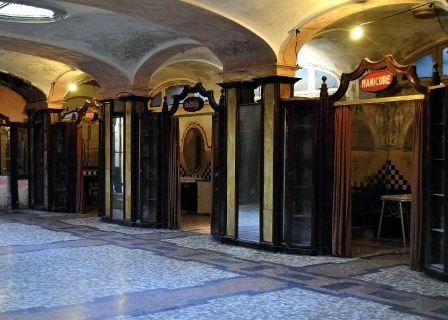
WTI Magazine #83 2016 September 16
Author : Enrico de Iulis Translation by:
It is very interesting to see how the years '10s of 2000 are heavily inspired by the '10s of 1900. Starting from the hipster movement that revisits many hairstyles and many mustache cuts of the first decade of the twentieth century, to fashion that repeats double-breasted waistcoat, two-tone shoes and cloaks of every style, the attention to the style of the last century has in fact increased in these recent years.
This centenary, perhaps unintentionally celebrated in costume and fashion of the moment, also finds historical and artistic traces, especially in the city of Milan, that with the Expo 2015 has inevitably revisited one of the connotative aspects of its history: the industrial revolution. A moment that greatly changed the city stretches and the customs of its inhabitants until the sudden interruption due to the outbreak of the first World war.
So travelers of the early twentieth century, or commuters benefitting the horse road linking Milan and Brianza with the eastern part of the Po Valley, arriving out of breath at Porta Venezia could use the facilities of the Day: they would find the daytime Hotel Venezia.
The idea of a hotel open during the day, or a place to take a bath, shave or manicure for ladies, where to write and send a letter or just lounge around reading in a private sitting room, was imported to Italy in 1911 from Cleopatro Cobianchi, an entrepreneur from Bologna. He opened the first daytime hotel returning from a trip to London. Other daytime openings followed in many other cities, to become a ubiquitous service near major railway stations and places of transit passengers.
The daytime Hotel Venezia in Milan was built between 1923 and 1925, designed by Piero Portaluppi, an architect we already spoke about in our descriptions of Milan deco.
The magic of this place lies in its total unchanging beauty, 90 years in which, except a few interventions in the '70s, everything remained in place preserving the great charm of elegance and extreme preciousness of the elements, made of materials which perfectly resist the passing of time.
And so, thanks to the effort of the FAI (Fondo Ambiente Italiano), we can immerse ourselves in an atmosphere suspended in time, with the door moldings, the spaces divided by booths, places of spas as designed by Portaluppi. We can watch original everyday objects of the '20s retake their charm, untouched by time, thanks to the high quality packaging techniques, such as fair play Albissola ceramics with still shiny bathrooms in contrast with the walls moistened by time.
It is a place poised between a macabre taste and the charm of untouched handcrafted details, which tells of Italy's habits from a hundred years ago, known and loved only through movies, that now we can finally appreciate at a very close range. We can also admire the extreme refinement of certain decorations that - paradoxically - at that time were within reach of all lifestyles, a high standard untouched and not lowered in value by the extreme seriality of the production, like would be nowadays for us, modern citizens of the '10s but of another century.



